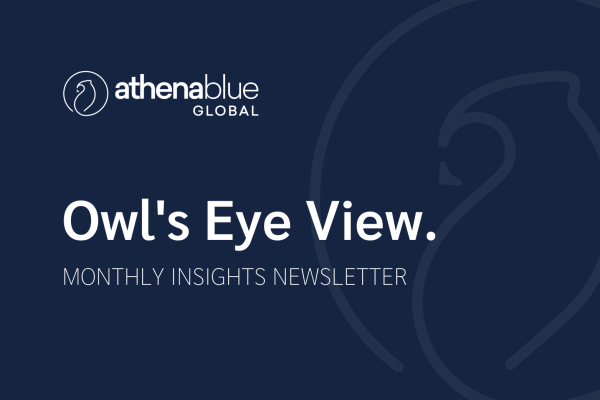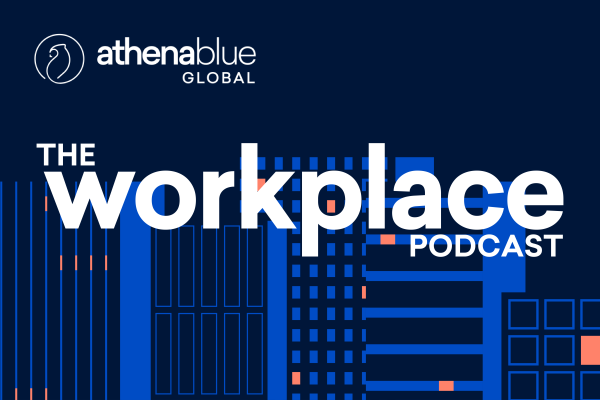In today’s information-filled world, an abundance of information is within reach to support workplace transformation projects. Through a thoughtful approach to research, leaders and change teams can gain valuable insights that will help optimise costs and maximise the chance of success.
Unfortunately, many organisations fail to make the best use of research. Some are drowning in data while struggling to find meaningful and applicable insights. Others, with the aim to ‘optimise costs’, are trying to find quick and easy ways to have their questions answered.
Workplace research also presents several pitfalls that even the most forward-thinking and well-intended decision makers may fall into:
- Strong commitment to a specific research methodology may divert decision makers’ focus from their projects’ ultimate objectives. Spending a lot of time on surveys, for example, could sway them to pay disproportionate emphasis on easily quantifiable metrics such as in-office attendance or space utilisation, while overlooking such important objectives like motivation, trust, or cultural alignment.
- Asking great questions on the wrong platforms can lead to underwhelming results. For example, workshops sometimes focus on simple questions that could be easily answered by surveys. In contrast, surveys often include questions that employees cannot meaningfully answer without first learning and thinking more deeply about the issue, and which would be better discussed at workshops.
This article outlines some of the common research methods used in workplace change projects, highlighting the opportunities these methods offer, their limitations, examples of questions they can effectively answer.
While this list is not exhaustive – data-collection through observation studies, pilot projects, sensors, direct feedback, or the analysis of digital breadcrumbs, for example, deserves another discussion – understanding these methods should provide a solid start for planning and implementing workplace change projects.
When it comes to leveraging research, there are no shortcuts. (Hence the long article.) But a strategic approach can make this process straightforward, effective, and hugely rewarding.
01 – Industry research and forecasting
Opportunities: Industry research explores trends in a specific sector, forecasts challenges and opportunities, and outlines principles for a successful operation. These insights can shed light on what is required from employees to achieve organisational resilience and success, and assist leaders in optimising business and organisational strategies. Industry research can also help identify promising workplace solutions for improving key performance metrics such as employee engagement, attraction and retention, by highlighting what is working well across the sector.
Limitations: Industry research offers generic insights that cannot account for the unique needs and attributes of individual organisations and their people. Furthermore, the future is inherently uncertain, and research focused on predicting trends can only offer educated guesses. Decision-makers also need to be wary of self-appointed experts who may present oversimplified and speculative findings with undue confidence, while the more nuanced and humble answers of genuine researchers can get lost in the noise.

Questions answered:
- Where are we heading?
- How can we stay resilient?
- What do we need from our people?
- What skills and behaviours should our workplace support?
02 – Workplace Trends Research
Opportunities: Workplace trends research investigates how different organisations operate and how their workplaces are designed and used. By learning from the choices and results of other organisations, leaders can get a clearer idea of the advantages and disadvantages of the different approaches they themselves are considering. Workplace trends research also sheds light on what the competition offers, helping leaders make strategic choices that can keep them competitive in a dynamic job market.
mitations: Similarly to industry research, workplace trends research often yields generalised insights – including ‘best practices’ – that may or may not be applicable in a unique context. In addition, available case studies often reflect biased views of decision-makers who have vested interests in their projects’ success, while survey-based studies can only assess respondents’ subjective perspectives. Following trends without critical evaluation can lead to adopting strategies that are popular but not necessarily effective.

Questions answered:
- What are the common pros and cons of different workplace solutions?
- What choices do our employees have?
- What are candidates looking for?
- How can our workplaces help attract and retain talent?
03 – Employee Surveys
Opportunities: Employee surveys are a cost-effective way to gather feedback from all members of an organisation about the current state of the workplace. Anonymous surveys encourage more honest responses and can be useful for exploring sensitive topics or negative experiences. Surveys also make it possible to explore correlations between specific workplace features and employee experiences through advanced data analysis, helping leaders identify opportunities for impactful improvements.
Limitations: While surveys can provide useful insights into simple, straightforward patterns, they are less suited to exploring complex challenges and environments. The fast-paced nature of completing questionnaires does not lend itself well to exploring issues requiring reflection, deep thinking, or creative input. Surveys – which often focus on quantifiable metrics – can also be limiting when it comes to capturing the richness of the human experience, including emotions, relationship dynamics, inspiration and motivation.

Questions answered:
- How do employees feel about the existing workplace?
- What’s working and what’s not working well?
- How do different workplace features and practices influence productivity, collaboration, wellbeing and satisfaction?
04 – Workshops
Opportunities: Well-designed workshops tend to be highly interactive and engaging, effectively complementing employee surveys. By providing a safe space for free-flowing conversations and utilising creative exercises for reflection and self-expression, workshops can uncover hidden issues, spark innovative ideas, and reveal fascinating details about people. Participants can not only share their thoughts more openly than via surveys but also learn about themselves and one another. In addition, workshops provide opportunities for experiential learning, leaving participants with immediately applicable knowledge, a greater sense of engagement, and increased enthusiasm about the changes ahead.
Limitations: While workshops can deliver immense value, they are often challenging to organise, especially when conducted in person. They require significant time investment, as rushing through them is counterproductive. The number of participants is limited, which means leaders and organisers need to make careful choices to ensure a broad range of roles and perspectives are represented, and some employees may feel left out.

Questions answered:
- What are the real problems in our workplace, and what are the root causes?
- What do people need in order to feel well and realise their potential?
- What kind of spaces provide the best support for different activities?
- Where are the untapped opportunities for innovation and impactful workplace transformation?
05 – One-on-one interviews
Opportunities: Conducting interviews with representative members of an organisation provides a great opportunity to deep-dive into specific issues. The one-on-one format makes it easier to build rapport and trust than any other settings, and provides a safe space for candid, emotionally rich, empathetic conversations. Interviews allow for unscripted dialogues which can lead to unexpected insights, creative solutions, and self-discovery. For these reasons, interviews are especially valuable when an organisation aims to address complex or ambiguous challenges, or operates in an uncertain environment.
Limitations: Running a large number of interviews can be relatively resource-intensive and time-consuming. There is also a practical limit to the number of people who can be interviewed, which means in large organisations, only selected members may have their voices heard this way.

Questions answered:
- Where do people find most meaning in their work?
- What are the challenges and frustrations they find difficult to discuss with their colleagues?
- What changes could make a significant difference to individuals’ performance and experience of work?
06 – Scientific Research
Opportunities: Scientific research reveals how certain design qualities and work practices can support specific behaviours, experiences, and performance outcomes (including motivation, focus, creative thinking, or relationship building). By leveraging insights from multiple fields such as psychology, biology, and social and organisational sciences, design and change teams can develop effective strategies that address people’s holistic needs. This science-driven approach also allows leaders to make informed decisions with greater confidence, creating workplaces that deliver on their promise.
Limitations: Scientific studies often focus on the effect of interventions on the majority of subjects; however, they provide little guidance when it comes to supporting people whose needs and responses differ from the mainstream. In addition, answers offered by science are often complicated – not as simple or black and white as many people would hope for. While genuine scientific research is rarely a great candidate for making exciting headlines, low-quality studies or media reports often get more publicity than they deserve. This can make it challenging for non-research-savvy leaders and designers to find credible, relevant, actionable insights.

Questions answered:
- What work practices will help us enhance productivity, teamwork, and innovation?
- When is it most beneficial to work together in person?
- How can our workplace support the skills and behaviours that are critical for organisational performance?
- What workplace design features can promote the experiences our employees and candidates are seeking?
Bringing it all together
As a rule of thumb, the more people provide input in a specific activity, the more generalised the learnings. Engaging fewer people tends to yield deeper and more specific insights, suited to specific contexts. To make the best of both worlds, it is recommended to engage in a variety of research activities.
Change teams are advised to seek both quantitative and qualitative data, and focus on metrics that are most relevant and important for the organisation. They need to be clear about the questions each research activity aims to answer, and ask those questions in the right way, considering the potentials and limitations of the different research methods and platforms.
Research activities should also be conducted in a logical order, to achieve the best results. The outcomes from each activity can potentially shape the focus of the next one. For example:
- Industry research can uncover specific skills the workplace needs to support – say, cross-disciplinary collaboration.
- Workplace trends research can uncover work practices that can support this skill – say, impromptu meetings
- Employee surveys can reveal how well the current workplace supports this practice – say, there is a lack of suitable meeting spaces
- Workshops can explore what cross-disciplinary collaboration looks like in the organisation – say, involving playful activities and brainstorming
- Interviews can dive into memorable evens when cross-disciplinary teams were in the zone and produced exceptional results – say, using a space that made it easier for people to drop their guard and run with their imagination
- Scientific research can highlight the design qualities that support these experiences – say, stimulating colours, thought-provoking décor, and tall bar-stool type seats promoting physical movement
Some decision makers might find it a bit daunting to get their heads around the ins and outs of research. Thankfully, expert guidance can make this process streamlined and easy to follow.
Leading or participating in research can also be a truly enjoyable and exciting experience. Research activities offer meaningful learning opportunities for everyone, and can create lasting positive changes in any areas of leaders and employees’ work lives.
Need assistance with how to start your workplace research? Athena Blue Global specialises in unpacking the workings of your workplace, defining and making sense of findings that result in actionable items for your leadership. Contact us to learn more about how we can help through our Vision & Strategy Services.





